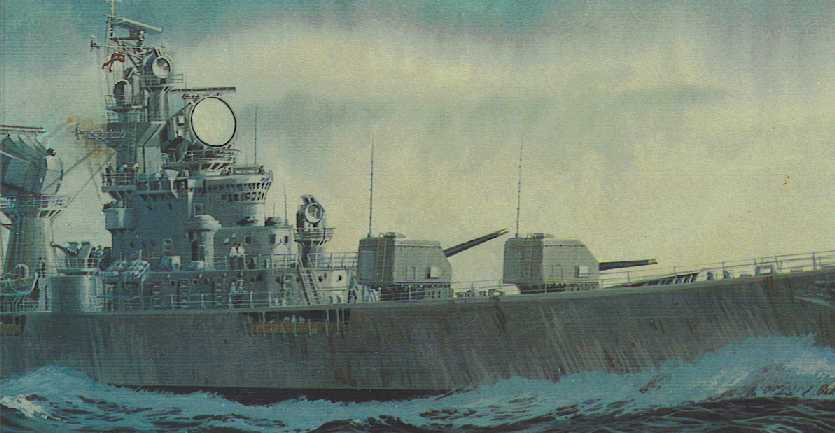|
In 1948, Vickers-Armstrong (Barrow) submitted a proposal for a twin 5"/70 (12.7 cm) mounting having a revolving weight of 189 tons (192 mt) and 311 tons (316 mt) in total (including 500 rounds of ammunition) while Vickers-Elswick submitted a proposal for a twin 5"/70 (12.7 cm) mounting having a revolving weight of 113 tons (115 mt) and 265 tons (269 mt) in total (including 500 rounds of ammunition). For comparison, the twin 4.5"/45 (11.4 cm) Mark VI mounting used on the Daring class destroyers weighed 44 tons (45 mt). In addition, there was also a single mounting proposal with a maximum elevation of 90 degrees and a total weight of 77 tons (78 mt). Cyclic rate of fire for all of these designs was about 66 rpm, although higher figures are also quoted. These weights were considered to be too heavy and so the project was changed in November 1951 to a shorter barrel length of 5"/62 (12.7 cm) with a ROF of 60 rounds per minute. This weapon was to have a muzzle velocity of 3,400 fps (1,036 mps) and use fixed ammunition and water cooling. At these very high muzzle velocities, it was expected that the barrel would heat rapidly to unsafe levels. Therefore, firing was limited to 100 rounds at a time, followed by a five minute pause to allow the barrel to cool. Following this pause, an additional 100 rounds could be fired. Two kinds of ammunition were to be developed, an HE round for anti-aircraft fire and a HEP (HE Piercing) for anti-surface fire. HEP was expected to pierce 1 inch (2.54 cm) NC plate at the minimum striking velocities at angles up to 50 degrees. HEP was to have a burster of at least 5 lbs. (2.3 kg). A 4,700 - 4,800 ton destroyer/cruiser design of 1951 shows three of these guns, mounted bow, amidships and stern. Outfit was to be 270 rounds per gun, a rather surprisingly small amount, as it is equivalent to only four minutes of firing at the maximum ROF. Again, these mountings were determined to be too heavy and the design was changed once again to a 5"/56 (12.7 cm) weapon, as detailed below. |

Artist conception of 1953 Cruiser Design
with two bow 5"/62 (12.7 cm) twin mountings
|